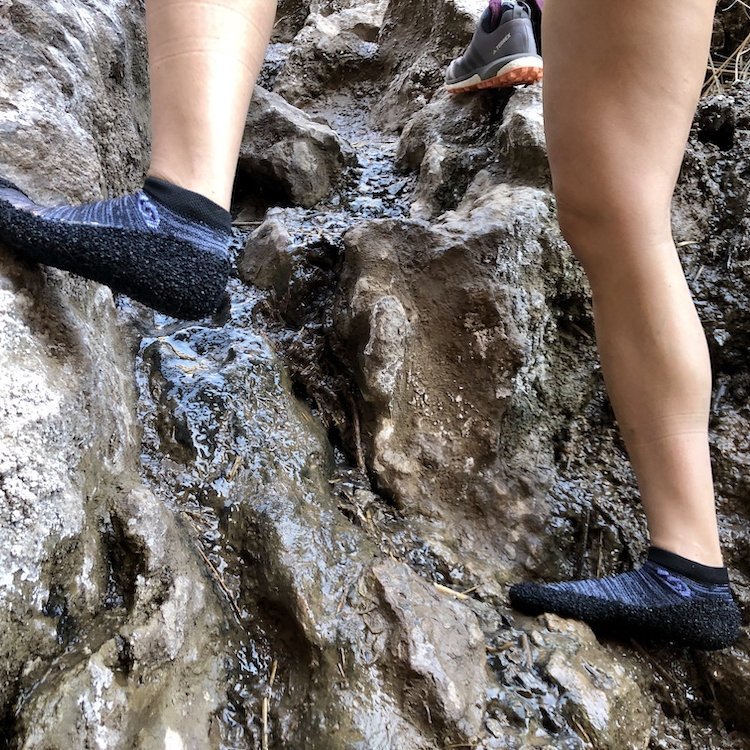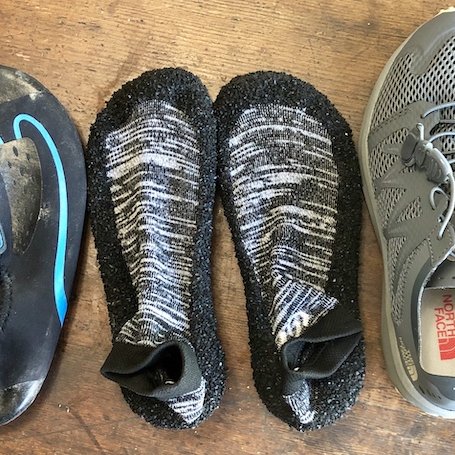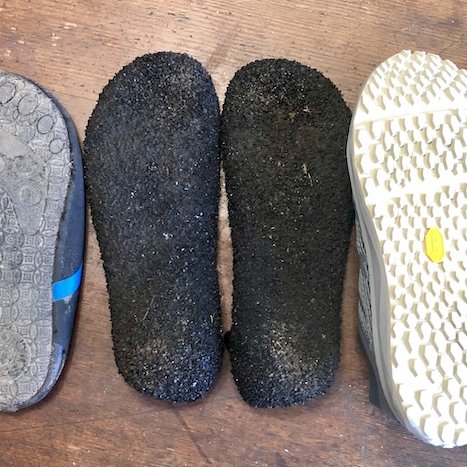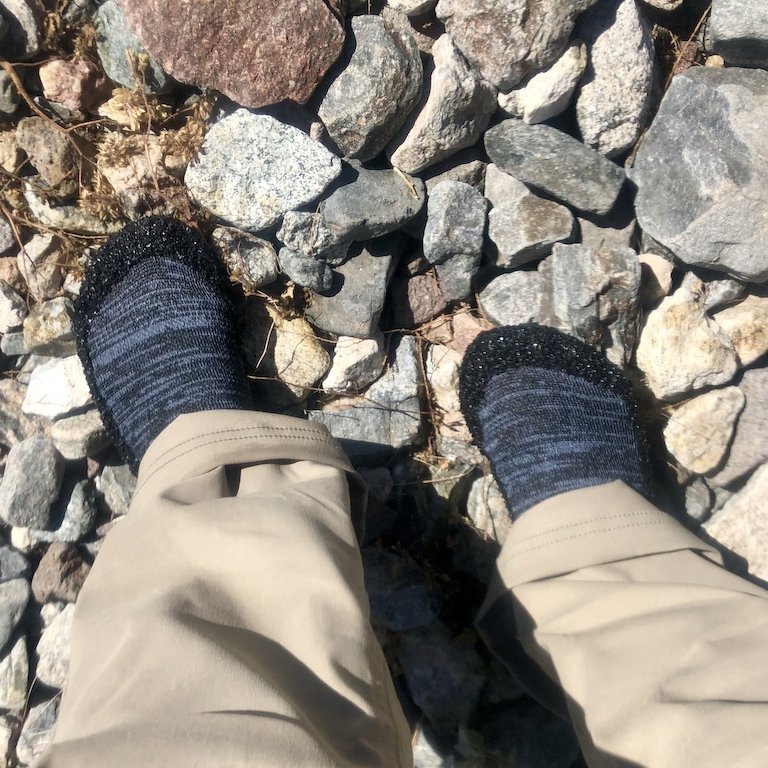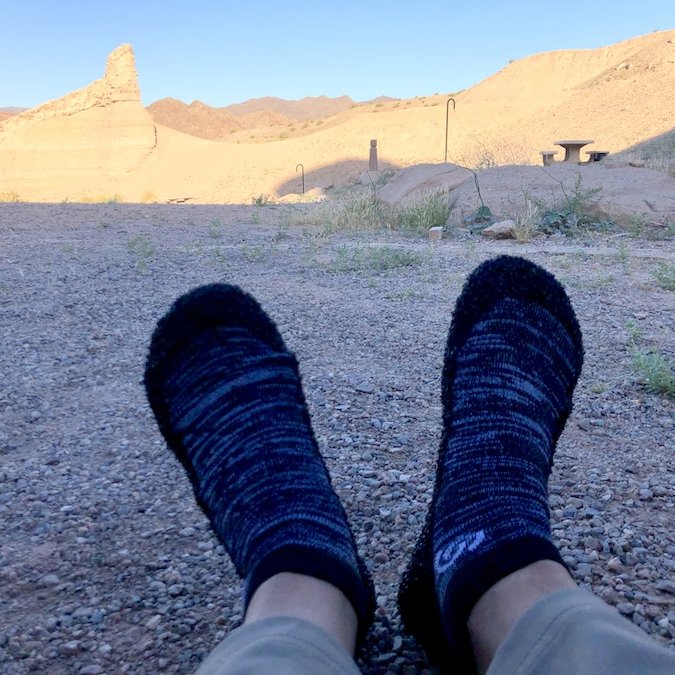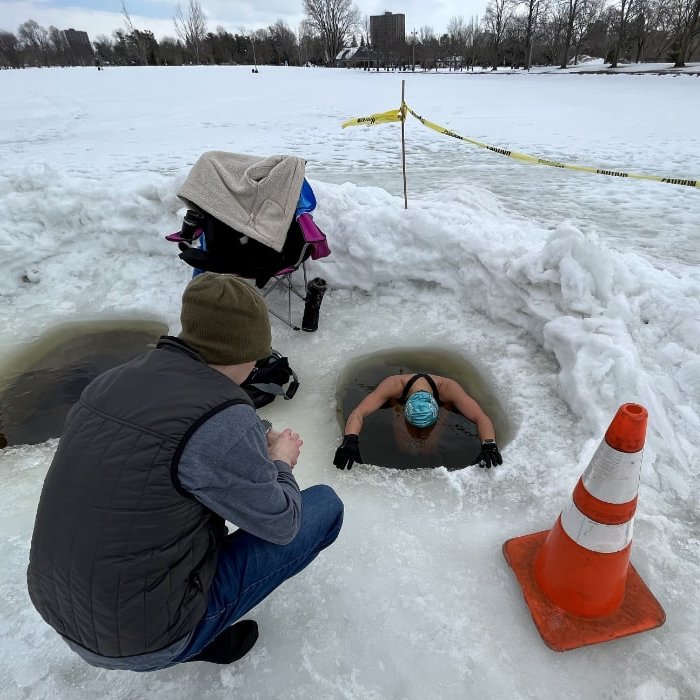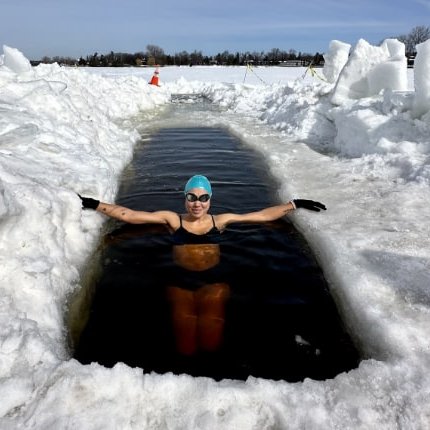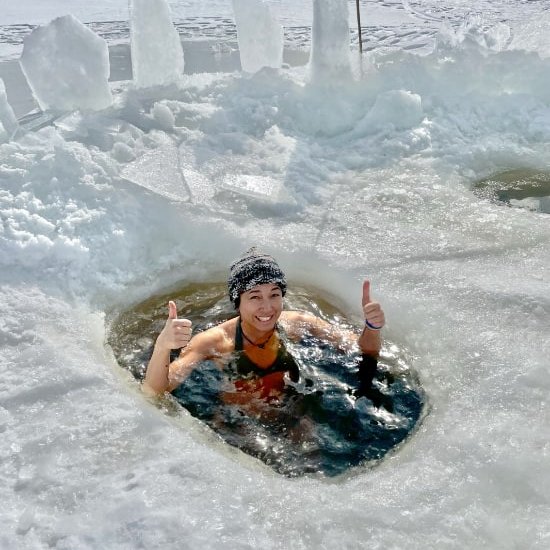"Tough" socks are coming on the scene as a camp shoe option for the ultralight backpacking community. I couldn’t help but want to give Skinners, the latest, lightest version of them, a try, as I fine tune my wants and needs in my quest for the ultimate ultralight backpacking kit.
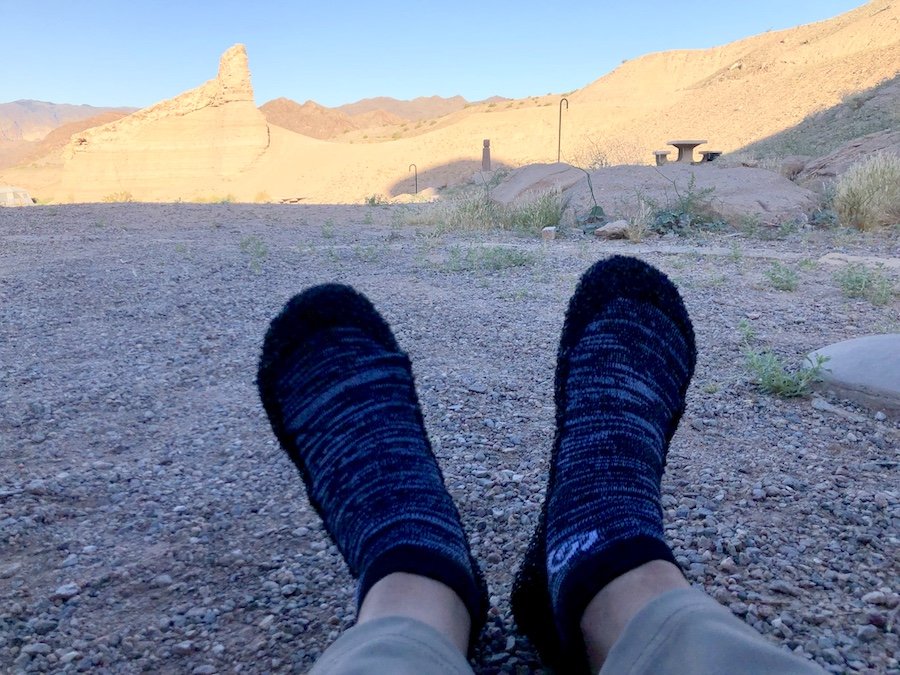
Weighing In On Skinners
Weighing in at only 163g (5.8oz) at my shoe size, they are easily one of the lightest options out there, but does that lightness come at a cost? Yes, but not as much as you might imagine. They are still offer enough protection for me to use it as an ultralight camp shoe. They wouldn't be my first choice if I wasn't trying to keep my pack ultralight. And they aren't the lightest option I have as a camp shoe option.
I have pair of really light water shoes that I got on Amazon, JOINFREE Water Sports Shoes, for only $18.99 CAD that weigh in at 124g. Their soles offer slightly more protection to my feet against rocks, but the rubber doesn't come round the sides. It's all in the base so if the ground is at all moist, water will quickly pass through the neoprene. Not a big deal in the summer months when it's dryer and warmer, but in the wetter, cooler months in the spring and fall in the Pacific Northwest they are less practical. I'll take the extra protection for 19g.
If protection and comfort was a higher priority, I would take my The North Face Litewave Flow shoes, which are 335g, but as a secondary camp shoe for an ultralight backpacking trip, that's a big much. I use those more as a primary shoe for a kayaking or canoe portage expedition trip in the summer months and dispense with the need for a secondary camp shoe. These cost around $100-175 depending on whether your buying the most recent model or an older one. I got last year's model on sale and am quite happy with them as an all-round, multi-use summer shoe.
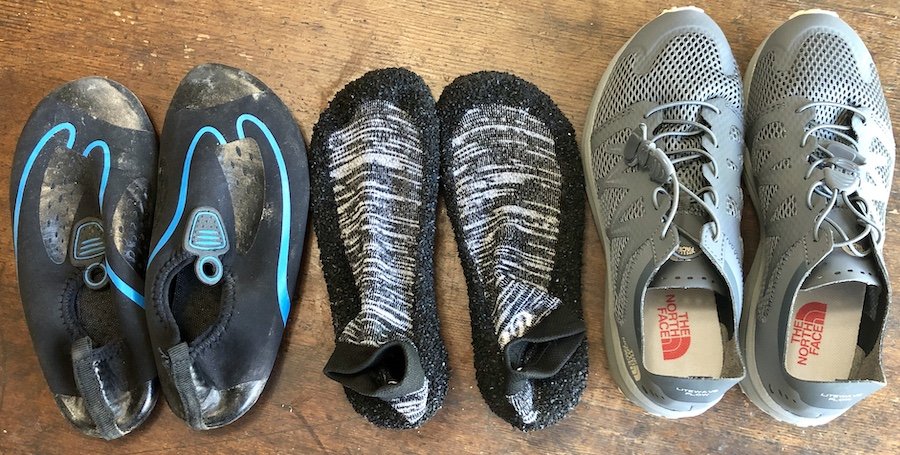
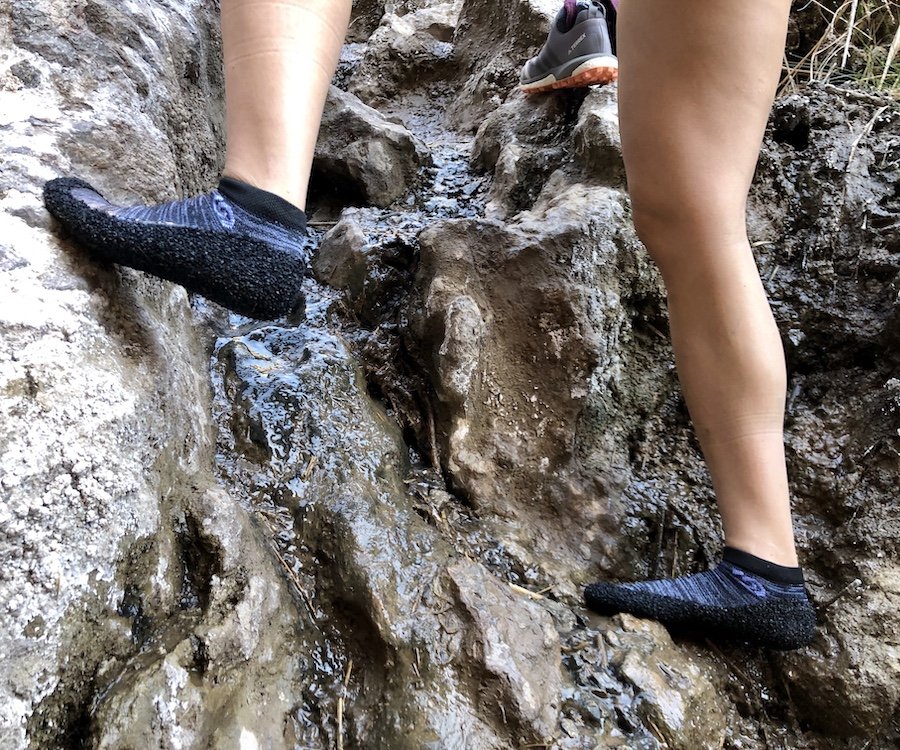
Water-Shedding Qualities... Check
The Skinners work well enough for river crossings as long as you're careful where you step. They are waterproof on the bottom and sides and the tops are breathable, which is better for overall comfort. To dry them more efficiently simply flip them inside out, give the tops a quick squeeze to get rid of any excess water, then secure them to the outside of your bag, in a mesh pocket or hang them in a mosquito head net or mesh stuff sack. It takes around 2 hours and 45 minutes for them to completely dry out in full sun from completely soaked state using this method (I actually timed it), which is similar to what you can expect from a neoprene top water shoe.
As for their protective qualities, they performed well for me for how I would use them. They handled rocks well enough with a bit of care where I step, and because of their 3-layer Stretchknit technology, they seem to adapt to my movement better, giving more support than I’ve ever found with my ultralight water shoe. I wouldn’t want to stub my toe on a rock with them, much the same as with my water shoes, so I would advise a little caution using them for crossings.
Easy Slip On and Off
There’s nothing to lace up. They slide easily on and off your foot, and if you get the right size, they will work barefoot OR with a thin sock. If warmth is a concern, you could easily wear a merino wool liner sock underneath them.
Multiple Uses in One Sock-Shoe
Because they offer more support than water shoes or other minimalist sock-shoes, you can use them for other activities, like martial arts, yoga, any kind of gym workout, or you could even just wear them out wherever if you like the feeling of walking around barefoot all day without worrying about stepping on hot pavement or sand. If you're going to use them in a martial arts or yoga studio where they go barefoot, make sure you use them only as a dedicated indoor shoe, or else you're just tracking in outdoor gunk, which is unsanitary for those going barefoot.
The website says you can go for short runs and hikes in them, but I think I would prefer to stick to my supportive trail runners for that purpose, but it’s good to know that they wouldn’t be useless if something happens to my regular shoes and I had to use them as a back-up.
My Testing Ground
I tried these out as my camp shoe while we were camping in the Arizona desert. They kept my feet protected against the scorching hot ground and my feet didn’t seem too bothered by rocks or gravel. I used them for our kayaking and loved the way they felt. I was able to feel with my feet better than I do with standard water shoes. On our hike down the Gold Strike Canyon Trail, I wore them to jump in the Colorado River and climb back up the rocks and then to hike back up the trail to find a quieter hot spring to dunk in. I wouldn’t have wanted to step hard on any larger, sharper rocks, but they protected my feet well for that short hike. I even liked them a bit better than my trail runners for scrambling up wet rock faces because they allowed me to better feel the rock through them.
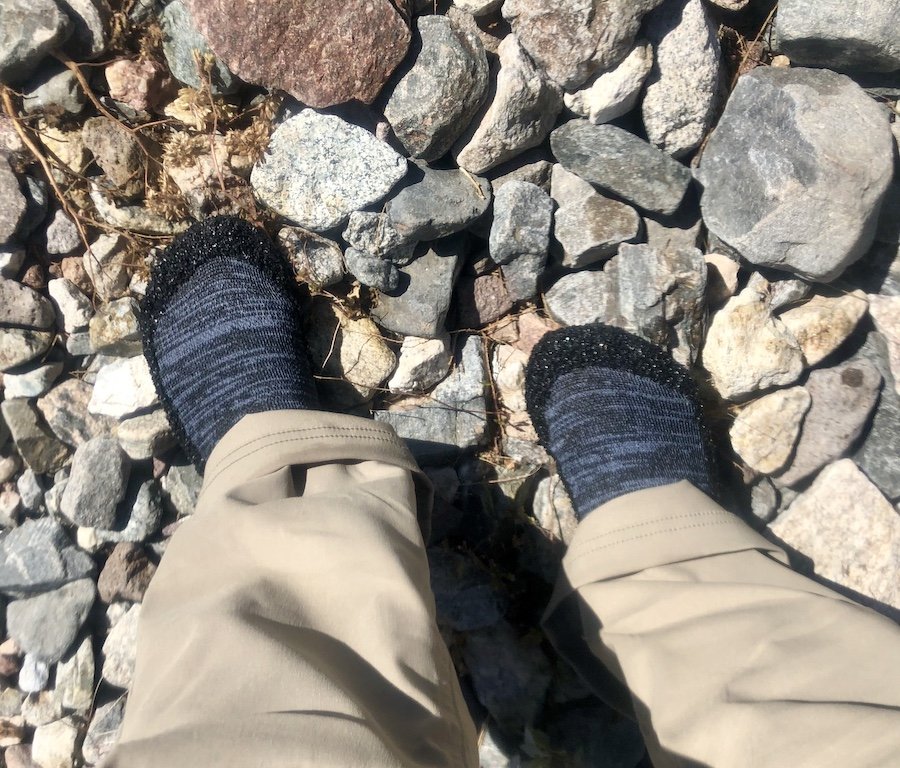

Are They the Right Shoe for You?
This is a hard question to answer. They work great for a great many things, but if you feel at all anxious or uncomfortable in a low cushion shoe, or have a foot condition that requires greater support to keep it in check, I wouldn’t suggest these. But for my purposes, as an ultralight camp shoe that can be used a a variety of other outdoor and indoor contexts, they are great for my needs. At $80USD per pair, they are not the cheapest option out there, but I like them.
